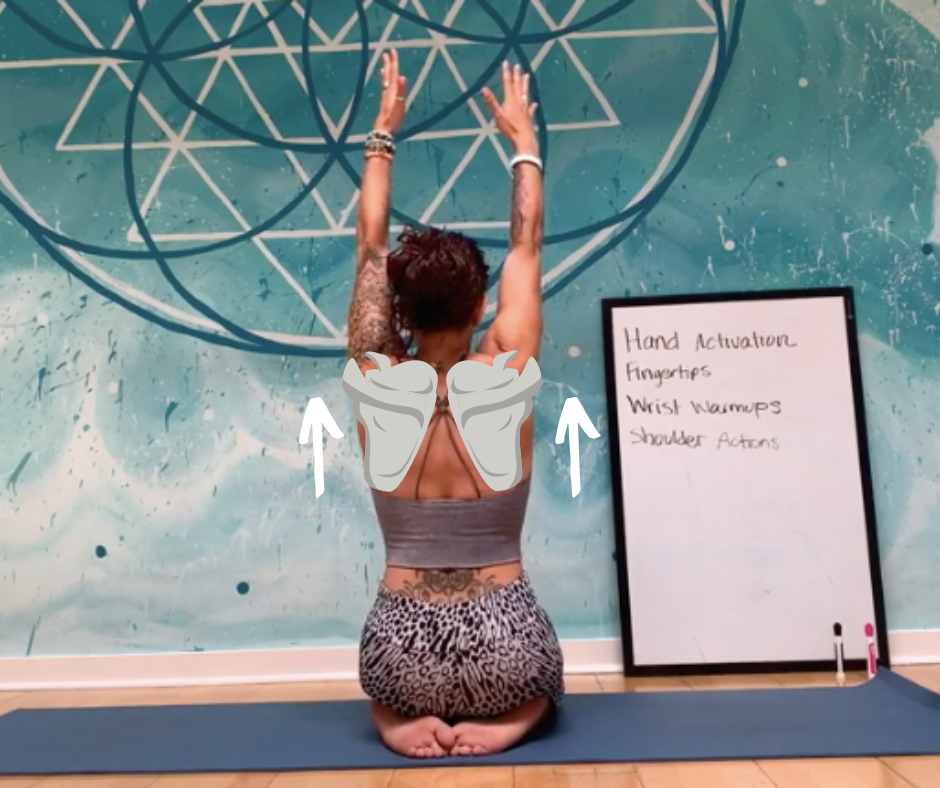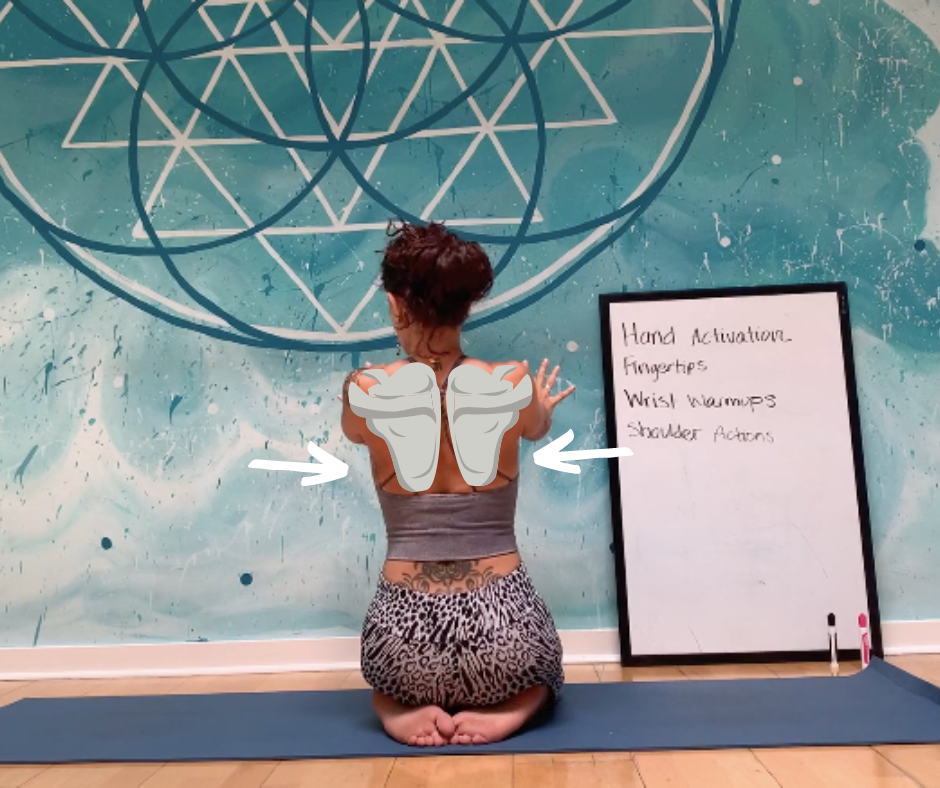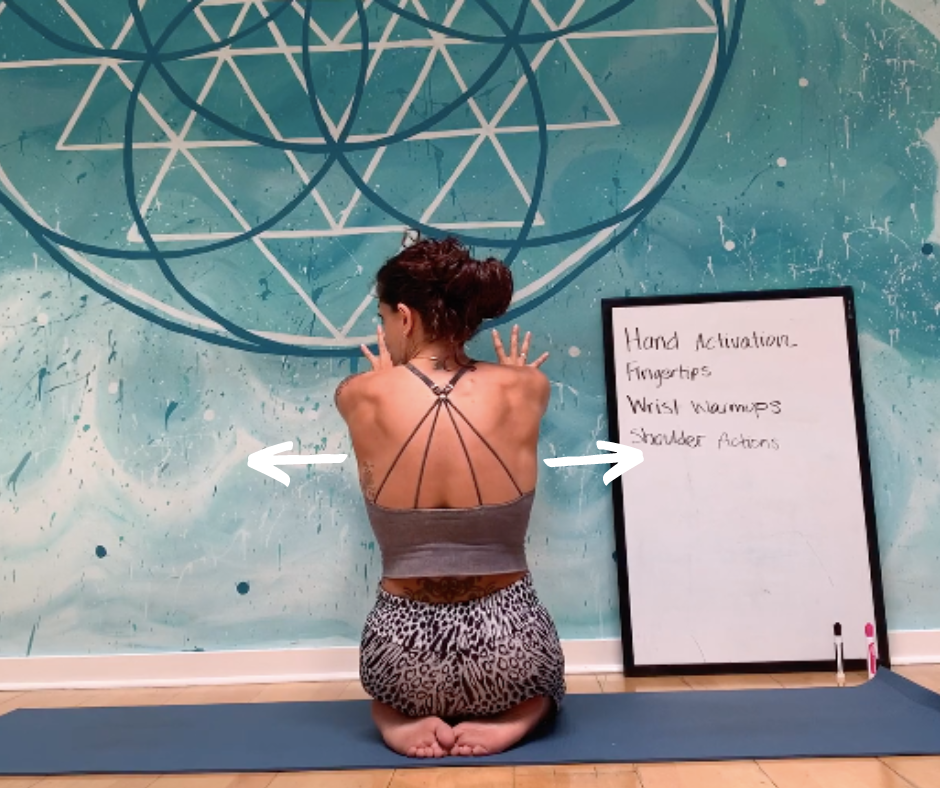The Way You’re Moving Your Shoulders Could Make All the Difference

Small subtle shifts in your body can make all the difference from nailing your pose confidently or struggling to figure it out.
When learning how to do arm balances (or really any yoga pose), this is one of the biggest and usually surprising factors people don’t realize.
Here, we’re going to talk about the body mechanic that can impact your arm balance/ inversion/ yoga practice the most: the placement and movement of your shoulders!
The Scapula (AKA your shoulder blades) are two wing-like structures located on your upper back on either side of your spine. They connect the humerus (upper arm bone) to the clavicle (collarbone).
There are 17 different muscles connected to the scapula that allow the shoulder to move through various planes of motion.
The scapula look like this:

The 3 main types of Scapular movement we will talk about are:
1) Elevation
Elevation happens when we bring our arms overhead, the shoulder blades slide UP our backs.
It looks like this:

2) Retraction
This action happens by squeezing the shoulder blades in towards one another.

3) Protraction
This action happens from pressing the ground away and separating your shoulders towards your ribcage. This action happens in poses like cat pose, plank and most arm balances

Although all of these ranges of motion are important, when working to create stability in most arm balances (think crow, one-legged crow, flying pigeon, flying lizard, etc.) shoulder blade PROTRACTION is the action we want to be creating in the upper back.
If you feel like you’ve hit a wall when it comes to progressing in arm balances, take some time to warm up your spine with cat/cow’s along with protraction drills.
To perform a protraction drill start in Table Top with a neutral spine.
On your inhale, allow your chest to lower and the shoulder blades to come together on the back body (think retraction),
and as you exhale, PUSH into the ground and think about rounding your upper spine and finding Cat Pose.
Interested in learning more about the mechanics behind nailing your arm balances? Join us today in Yogi Flight School!

